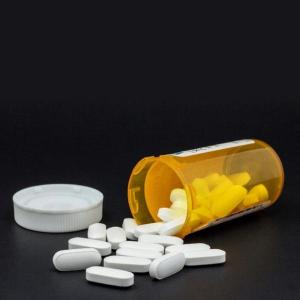By Gina Vitale
AUSTIN, Texas — Vaccines, commonly used to prevent diseases caused by viruses, could also be used in the near future to prevent opioid use disorder and other substance use disorders.This innovation is timely in light of the current opioid crisis, which the U.S. Department of Health and Human Services in Oct. 2017 declared a public health emergency. In 2015, there were more than 30,000 opioid-related deaths — more than double the 2002 number, according to the National Institute on Drug Abuse (NIDA).
Vaccinations are one of several possible approaches to combatting the crisis, including new medical therapies, the expansion of access to existing pharmacological treatments, and education for the public as well as prescribing physicians.
“We can use science to help control these [opioid overdose] crises, but very importantly also to prevent them from ever happening again,” said NIDA director Nora Volkow during a Feb. 19 talk at the American Association for the Advancement of Science (AAAS) annual meeting.
Many complex factors contribute to the development of opioid use disorder. Often, legal opioids are prescribed to treat severe pain, and patients eventually build tolerance to the medication, requiring increasingly higher doses to have an impact. Opioids, like other drugs, are known to activate a region of the brain associated with rewards.
People who start off using prescription opioids often transition to heroin, due to its lower cost and higher accessibility. Fentanyl, a prescription synthetic opioid with 50 times the potency of heroin, is becoming a more prevalent — and more fatal — alternative. Heroin-related overdose deaths in the U.S. climbed to almost 15,000 in 2016, according to NIDA. For synthetic opioids other than methadone, such as fentanyl, the count was even higher, at more than 20,000.
Urgent solutions to this crisis can take a range of approaches, including the development of new drug therapies.
In 2016, biologists at the Scripps Research Institute created a fentanyl vaccine and tested it in mice. The vaccine functions by introducing a protein-drug conjugate that stimulates the production of antibodies, which, in turn, target fentanyl, causing it to be less present at the action sites in the brain. While this reduces the analgesic effects of the fentanyl, it also reduces the risk of overdose. Vaccines of similar concept have also been researched for cocaine, methamphetamine, nicotine and heroin. Although the formulation would likely vary significantly for human subjects, the possibility of such a vaccine shows promise, Volkow said.
Pharmaceutical companies could also contribute to the solution by developing new medications that help reduce the euphoric effects of opioids, or novel non-addictive pain relievers that function via a different mechanism. However, because drug companies rely on profit from the widespread usage of their opioid dugs, it may challenge them financially to create a product that makes opioids less popular. That means devising ways to incentivize the production of new types of drugs might be part of the solution.
Another possible solution includes expansion of access to existing pharmacological therapies such as Medication Assisted Treatment, or MAT, specifically within the healthcare and criminal justice systems. MAT focuses on using drugs like methadone, buprenorphine and naltrexone with the proper frequencies to mitigate addiction. Most of these treatments work either by diminishing the euphoric effects of opioids or by reducing cravings.
In one instance of broader access to pharmacological therapy helping to mediate the crisis, the use of MAT in a Rhode Island prison was associated with a 60.5% decrease in fatalities between 2016 and 2017.
“If you’re going to put so many in the criminal justice system, could we use that to help them?” Volkow said.
Aside from medical propositions, education can play a key role in resolving the opioid crisis. An ideal system would educate not only the public on how pain can be safely treated, but also provide information to health care professionals about how to minimize the risk of addiction when prescribing pain medications. A 2012 report from Columbia University’s National Center on Addiction and Substance Abuse found that at the time, among more than 9,000 residency programs for training medical professionals, none was in addiction medicine.
To help fill that training and knowledge gap, the NIH has collaborated with universities to create educational programs that target both health care providers and the public. The NIDA Centers of Excellence for Physician Information provide information for physicians about substance use disorders. The NIH Pain Consortium’s Centers of Excellence in Pain Education aim to reach the general public.
“We have a lot of knowledge, and if we don’t disseminate it, it basically limits its utility,” Volkow said.
As NIDA director, Volkow aims to reduce the fatal impacts of this crisis as much as possible with a combination of these science-based solutions, as the opioid crisis has become a front page story nationwide.
“We can no longer ignore it,” she said.
Gina Vitale is a senior at Drexel University majoring in chemistry with a minor in psychology. She is the editor-in-chief of Drexel’s independent student newspaper, the Triangle. Follow her on Twitter: @GinaCVitale.

